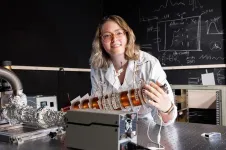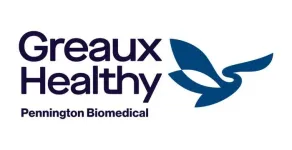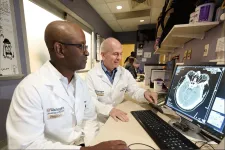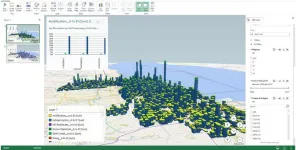(Press-News.org) BLOOMINGTON, Ind. — Indiana University researchers will lead a multi-institutional team of experts in areas such as informatics, psychology, communications and folklore to assess the role that artificial intelligence may play in strengthening the influence of online communications — including misinformation and radicalizing messages — under a $7.5 million grant from the U.S. Department of Defense.
The project is one of 30 recently funded by the department’s Multidisciplinary University Research Initiative, which supports basic defense-related research projects.
“The deluge of misinformation and radicalizing messages poses significant societal threat,” said lead investigator Yong-Yeol Ahn, a professor in the IU Luddy School of Informatics, Computing and Engineering in Bloomington. “Now, with AI, you’re introducing the potential ability to mine data about individual people and quickly generate targeted messages that appeal to them — applying big data to individuals — which could cause even greater disruptions than we’ve already experienced.”
The insights from the research — on the interplay between AI, social media and online misinformation — could potentially equip the government to counter foreign influence on campaigns and radicalization, he said.
The five-year effort will unite experts across a wide range of disciplines, including psychology and cognitive science; communications; folklore and storytelling; artificial intelligence and natural language processing; complex systems and network science; and neurophysiology. The six IU researchers on the project, all from the Luddy School, are also affiliated with IU’s Observatory on Social Media. Other collaborators include a media expert at Boston University, a psychologist at Stanford University and a computational folklorist at the University of California at Berkeley.
Specifically, Ahn said, the project will investigate the role of a sociological concept called “resonance” on people’s receptiveness to certain messages. This refers to the idea that people’s opinions are influenced more strongly by material that resonates with them through emotional content or narrative framing that appeals to existing beliefs or cognitive biases, such as political ideology, religious convictions or cultural norms.
Resonance can be used to create messages that bridge gaps between groups, as well as fuel greater polarization, Ahn added. However, AI’s ability to rapidly generate text-, image- or video-based content has the potential to escalate the power of these messages — for good or ill — by tailoring content to people on the individual level.
“This is a basic science project; everything we’re doing is completely open to the public,” Ahn said. “But it’s also got a lot of potential applications, not only to understanding the role of AI on misinformation and disinformation campaigns, such as foreign influence on elections, but also topics such as how can you foster trust in AI, similar to a pilot’s faith in the reliability of AI navigation systems. There are a lot of important questions about AI that hinge on our understanding of its intersection with fundamental psychological theories.”
The team will also be applying AI technology to support its research, he added. The use of AI to create “model agents” — or virtual people who share information and react to messages inside a simulation — will help the researchers more accurately model the way information flows between groups, as well as the effect that information has on the “people” inside the model, he said.
The team also plans to study real-life humans’ physical response to online information, both AI- and non-AI generated, with tools such as heart rate monitors to better understand the influence of their “resonance,” he said.
“There have been a lot of major developments in the area of model agents in the past few years,” Ahn said.
Other researcher have been able to create model agents who “debate” each other in a virtual space, then measure the effect of this debate on their simulated opinions, for example.
The IU-led team’s work will represent a “major departure” from other attempts to model belief systems through the simulation of people’s opinions, Ahn added. The project will apply “a complex network of interacting beliefs and concepts, integrated with social contagion theory” to produce “a holistic, dynamic model of multi-level belief resonance.” This approach was has been outlined in a paper published in the journal Science Advances.
The result would be a system that more closely resembles real-life complexities, where people’s opinions aren’t simply based upon political party but rather a complex intersection of belief systems, or social dynamics. For instance, Ahn said an individual’s social group or attitudes toward the medical industry may predict their opinions about vaccine safety more accurately than political ideology.
IU co-principal investigators on the project are assistant professor Jisun An, professor Alessandro Flammini, assistant professor Gregory Lewis and Luddy Distinguished Professor Filippo Menczer, all of the Luddy School in Bloomington. Lewis is also an assistant research scientist at the Kinsey Institute. Haewoon Kwak, associate professor at the Luddy School, will serve as senior personnel.
Other co-principal investigators on the grant are Betsi Grabe of Boston University, Madalina Vlasceanu of Stanford and Timothy Tangherlini of UC Berkeley. The research project will also involve several Ph.D. and undergraduate students at IU.
END
$7.5 million grant to guard against AI-driven misinformation
Indiana University researchers to lead multidisciplinary team studying the psychological influence of online communications developed with artificial intelligence
2024-09-04
ELSE PRESS RELEASES FROM THIS DATE:
Seeing like a butterfly: Optical invention enhances camera capabilities
2024-09-04
UNIVERSITY PARK, Pa. — Butterflies can see more of the world than humans, including more colors and the field oscillation direction, or polarization, of light. This special ability enables them to navigate with precision, forage for food and communicate with one another. Other species, like the mantis shrimp, can sense an even wider spectrum of light, as well as the circular polarization, or spinning states, of light waves. They use this capability to signal a “love code,” which helps them find and be discovered by mates.
Inspired ...
Miniature treadmills accelerate studies of insects walking
2024-09-04
Fruit flies walking on miniature treadmills are helping scientists learn how the nervous system enables animals to move in an unpredictable and complex world.
Insights from using these fruit fly-sized treadmills were reported Aug. 30 in Current Biology, a Cell Press journal. Several videos of the flies running on the treadmills are available for viewing on the online research paper. The lead author is Brandon G. Pratt, a recent physiology and biophysics Ph.D. graduate of the University of Washington School of Medicine in Seattle and a National Science Foundation ...
UTA undergraduate researcher receives national honors
2024-09-04
A physics student at The University of Texas at Arlington studying ways to measure the mass of tiny particles called neutrinos has earned a prestigious national award for her research.
Senior Kara Stogsdill received the Outstanding Undergraduate Research Award from the Society of Physics Students, an organization of the American Institute of Physics. The award is given to students based on exceptional research achievements in any physics-related field.
Stogsdill’s research is part of the Project 8 Neutrino Mass Experiment, which includes faculty and students from UTA and 13 other universities and national laboratories ...
Pennington Biomedical's Greaux Healthy Initiative takes aim at childhood obesity
2024-09-04
Pennington Biomedical Research Center is formally launching Greaux Healthy, a public service initiative designed to help improve kids’ health at every age. Developed with funding from the State of Louisiana, Greaux Healthy implements 35 years of Pennington Biomedical research and discoveries to inform tools, resources and programing for children, parents, physicians and educators throughout the state.
The Greaux Healthy initiative is developing a wide variety of educational materials distinctly tailored to four priority populations, including expectant families and parents of infants, ...
Millions of people with diabetic foot ulcers could benefit from new research discovery
2024-09-04
Highlights:
Researchers from Michigan State University and South Shore Hospital in Massachusetts have uncovered a connection between two common diabetes drugs — insulin and metformin — identified in wound exudates of diabetic foot ulcers, which may improve their healing.
While analyzing wound exudate (the fluid the body moves and secretes to the site of an injury), researchers discovered the presence of metformin in patients who take the drug orally.
The researchers then explored metformin’s relationship ...
Adding anti-clotting drugs to stroke care ineffective, clinical trial finds
2024-09-04
Stroke patients who survive a blood clot in the brain’s blood vessels are prone to developing new blockages during their recovery periods, even if they receive vessel-clearing interventions. In an effort to avoid further clots, doctors at 57 sites around the U.S. tested a possible solution: the addition of anti-coagulant drugs to medicine that dissolves blood clots.
But results from the clinical trial, led by Opeolu Adeoye, MD, head of the Department of Emergency Medicine at Washington University School of Medicine in St. Louis, indicate two such drugs did not improve outcomes.
The findings are available Sept. 4 in The New England Journal ...
Research Center awarded $14.4 million to advance new manufacturing solutions for microelectronics
2024-09-04
A new Energy Frontier Research Center (EFRC), supported by the Department of Energy’s Office of Science and led by SLAC National Accelerator Laboratory, was awarded $14.4 million over four years to advance manufacturing of microelectronics by investigating approaches to building their components in fundamentally new ways.
Instead of moving electrons through conducting metallic interconnects in the miniscule and ever shrinking parts of devices such as microchips used in computers and cell phones, the researchers propose to move information via spin waves that can propagate through semiconductors ...
Notre Dame researchers create new tool to analyze embodied carbon in more than 1 million buildings in Chicago
2024-09-04
The built environment — which includes the construction and operation of buildings, highways, bridges and other infrastructure — is responsible for close to 40 percent of the global greenhouse gas emissions contributing to climate change.
While many building codes and benchmarks have focused on constructing “greener,” more energy-efficient new buildings, it is not enough to seek to reduce emissions in operations, said Ming Hu, the associate dean for research, scholarship and creative work in Notre Dame’s School of Architecture. Rather, policymakers and industry leaders ...
SMU researcher helps develop new technique to explore oceanic microbes
2024-09-04
DALLAS (SMU) – When SMU researcher Alexander Chase was a young boy, the sheer diversity of plants in Earth’s tropical rainforests fascinated him. He found himself wondering, what new species were out there, waiting to be unearthed? That curiosity is why Chase now collects samples from Earth’s oceans using a new technique called Small Molecule In situ Resin Capture (SMIRC), which could be the first step in uncovering compounds that lead to next-generation antibiotics.
Microbial natural products come from microorganisms, or microbes, and account for many of today’s essential medicines, including most antibiotics. Microbes are too small to see without ...
New guideline for Helicobacter pylori includes change to primary treatment recommendation
2024-09-04
The American Journal of Gastroenterology has published a new guideline on the treatment of Helicobacter pylori (H. pylori) infection.
The corresponding author on the guideline is William D. Chey, M.D., chief of the Division of Gastroenterology and Hepatology at Michigan.
H. pylori is a bacterium that infects over half the people in the world, though most are asymptomatic.
It can cause dyspepsia, peptic ulcer disease and gastric cancer.
This latest clinical practice guideline notes that its prevalence in North America is decreasing, but it still infects 30-40% of the population.
A previous guideline ...
LAST 30 PRESS RELEASES:
How to make AI truly scalable and reliable for real-time traffic assignment?
Beyond fragmented markets: A new framework for efficient and stable ride-pooling
Can shape priors make road perception more reliable for autonomous driving?
AI tracks nearly 100 years of aging research, revealing key trends and gaps
Innovative techniques enable Italy’s first imaging of individual trapped atoms
KIER successfully develops Korea-made “calibration thermoelectric module” for measuring thermoelectric device performance
Diversifying US Midwest farming for stability and resilience
Emphasizing immigrants’ deservingness shifts attitudes
Japanese eels, climate change, and river temperature
Pusan National University researchers discover faster, smarter heat treatment for lightweight magnesium metals
China’s 2024 Gastroenterology Report: marked progress in endoscopy quality and disease management
Pusan National University researchers uncover scalable method for ultrahigh-resolution quantum dot displays
Researchers use robotics to find potential new antibiotic among hundreds of metal complexes
Gut bacteria changes at the earliest stages of inflammatory bowel disease
Scientists develop new way to “listen in” on the brain’s hidden language
Brain research: “Pulse generators” grow and shrink as memories are formed
For teens, any cannabis use may have impact on emotional health, academic performance
School meals could unlock major gains for human and planetary health
Menopause hormone therapy does not appear to impact dementia risk
Signature patterns of brain activity may help predict recovery from traumatic brain injury
Dresden study uncovers new key mechanism in cancer cells
New species are now being discovered faster than ever before, study suggests
Cannabis-based products show limited short-term benefit for chronic pain, with increased risk of adverse effects
Cannabis products with more THC slightly reduce pain but cause more side effects
Clearing the brain of aging cells could aid epilepsy and reduce seizures
Brain injuries linked with potential risk of suicide, new study finds
New technique lights up where drugs go in the body, cell by cell
New study finds movement of fishing fleets can reveal shifts in marine ecosystems
Embargoed: New evidence points to potential treatment for vascular dementia
Study uncovers disrupted brain balance in alcohol dependence
[Press-News.org] $7.5 million grant to guard against AI-driven misinformationIndiana University researchers to lead multidisciplinary team studying the psychological influence of online communications developed with artificial intelligence









